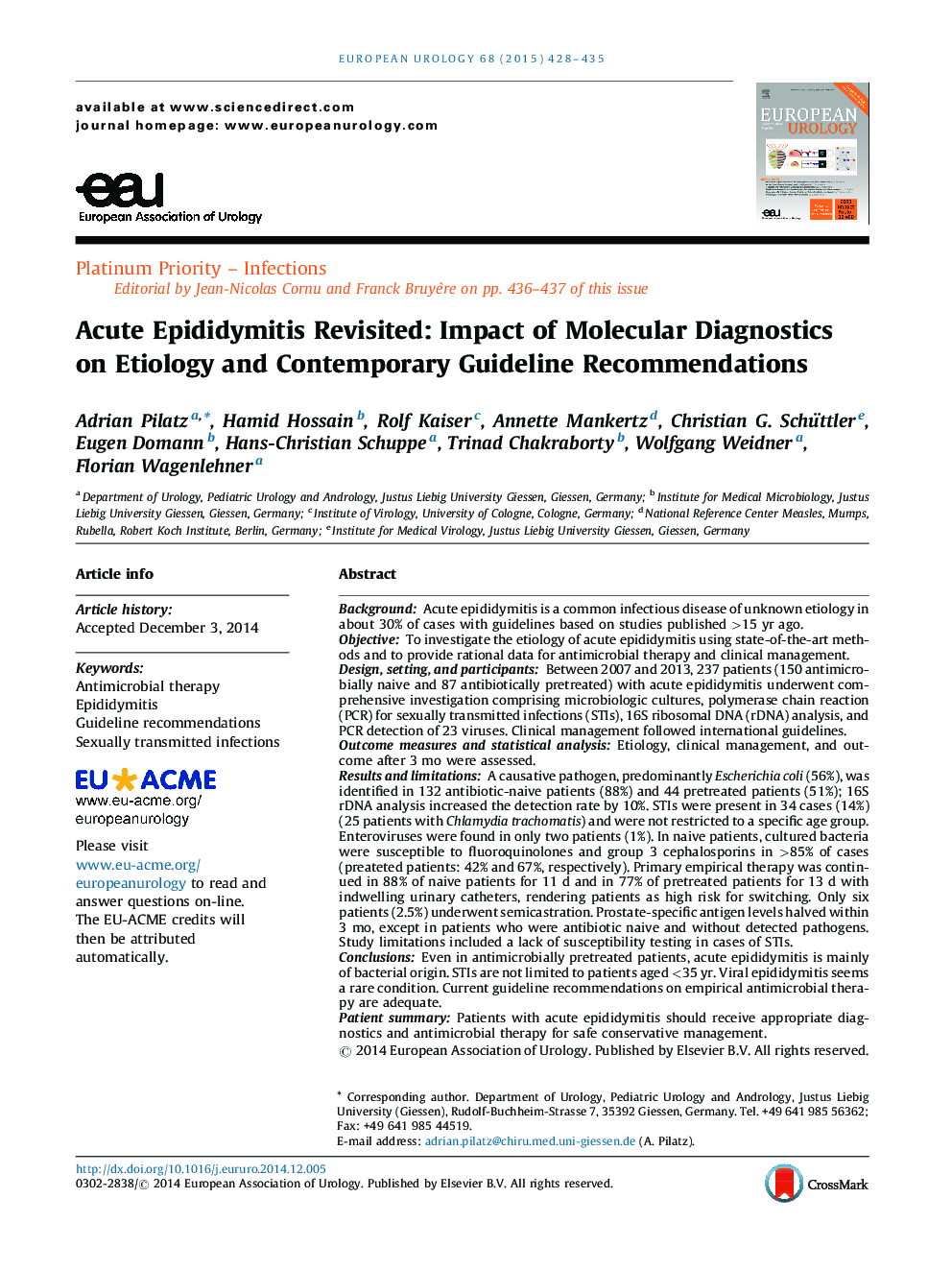| کد مقاله | کد نشریه | سال انتشار | مقاله انگلیسی | نسخه تمام متن |
|---|---|---|---|---|
| 6177637 | 1253107 | 2015 | 8 صفحه PDF | دانلود رایگان |

BackgroundAcute epididymitis is a common infectious disease of unknown etiology in about 30% of cases with guidelines based on studies published >15 yr ago.ObjectiveTo investigate the etiology of acute epididymitis using state-of-the-art methods and to provide rational data for antimicrobial therapy and clinical management.Design, setting, and participantsBetween 2007 and 2013, 237 patients (150 antimicrobially naive and 87 antibiotically pretreated) with acute epididymitis underwent comprehensive investigation comprising microbiologic cultures, polymerase chain reaction (PCR) for sexually transmitted infections (STIs), 16S ribosomal DNA (rDNA) analysis, and PCR detection of 23 viruses. Clinical management followed international guidelines.Outcome measures and statistical analysisEtiology, clinical management, and outcome after 3 mo were assessed.Results and limitationsA causative pathogen, predominantly Escherichia coli (56%), was identified in 132 antibiotic-naive patients (88%) and 44 pretreated patients (51%); 16S rDNA analysis increased the detection rate by 10%. STIs were present in 34 cases (14%) (25 patients with Chlamydia trachomatis) and were not restricted to a specific age group. Enteroviruses were found in only two patients (1%). In naive patients, cultured bacteria were susceptible to fluoroquinolones and group 3 cephalosporins in >85% of cases (preateted patients: 42% and 67%, respectively). Primary empirical therapy was continued in 88% of naive patients for 11 d and in 77% of pretreated patients for 13 d with indwelling urinary catheters, rendering patients as high risk for switching. Only six patients (2.5%) underwent semicastration. Prostate-specific antigen levels halved within 3 mo, except in patients who were antibiotic naive and without detected pathogens. Study limitations included a lack of susceptibility testing in cases of STIs.ConclusionsEven in antimicrobially pretreated patients, acute epididymitis is mainly of bacterial origin. STIs are not limited to patients aged <35 yr. Viral epididymitis seems a rare condition. Current guideline recommendations on empirical antimicrobial therapy are adequate.Patient summaryPatients with acute epididymitis should receive appropriate diagnostics and antimicrobial therapy for safe conservative management.
Journal: European Urology - Volume 68, Issue 3, September 2015, Pages 428-435